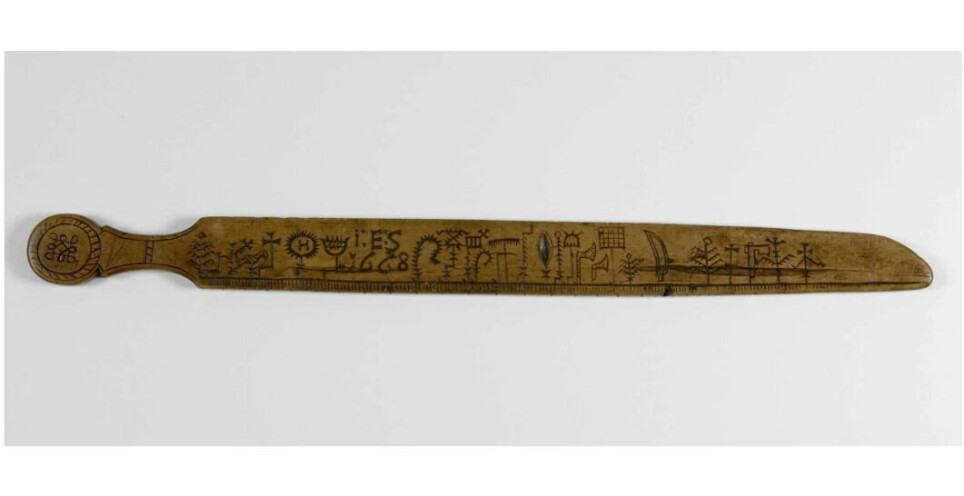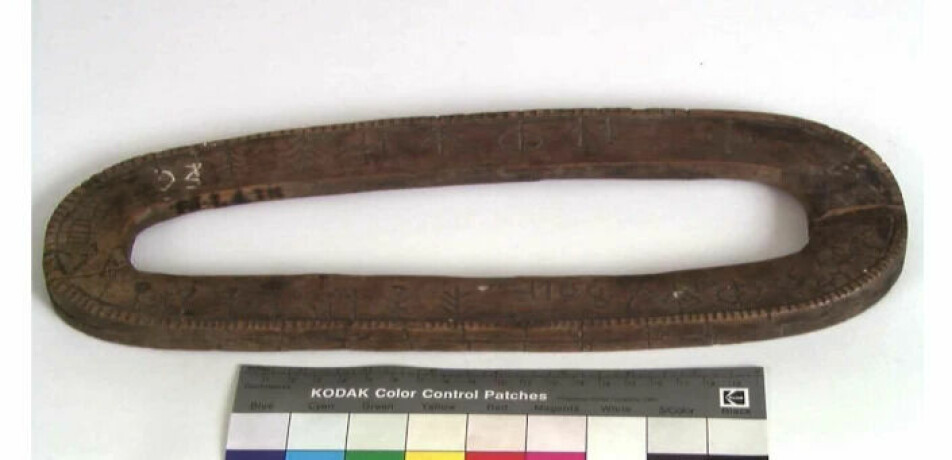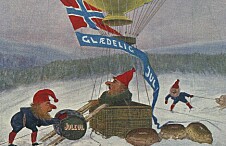
In the old days, people used rune staffs like this to count down to Christmas
The rune staff had no dates. Nevertheless, it kept track of many important days throughout the year, especially at Christmastime.
A calendar is a useful way to keep track of the days in a year. But we haven’t always had calendars with dates on them.
This became common in the 18th century, approximately 300 years ago. However, people had to keep track of the year and holidays well before that.
Calendar without dates
Before the calendar we know today, we had the rune staves in Norway.
The rune staff is a calendar that lasts forever, Ingeborg Hornkjøl explains. She works for the Norwegian Institute for Cultural Heritage Research (NIKU) as a field archaeologist in the Medieval Park in Oslo.
“It is undated, but all days are marked with a line. There is often an additional marking every seven days,” Hornkjøl says.
Days in honour of saints and holy figures
Holidays were very important and there were many of them in the run-up to Christmas.
“There are specific marks on all specific holidays,” says Hornkjøl.
The holidays were often in honour of Christian saints.
“There is an axe carved in for Saint Olav, for example,” she says.
Olav II, or Saint Olav, is an important saint in Norway. He was king in Norway 1,000 years ago.

Couldn't scratch Easter into the rune staff
“Admittedly, the symbols only apply to the dated public holidays. Easter is not marked on the rune staff, because then it cannot be used again,” says Hornkjøl.
Easter falls on different dates from year to year.
The church was likely responsible for reminding people of the holidays, and especially Easter. The church inscribed runes on a stick and sent it around the farms in the area.

Not the oldest way to keep track
The rune staff was not the first calendar used in Norway.
“The runic calendar is considered a precursor to the rune staff,” Hornkjøl says.
The Norse runic calendar was developed during the Viking Age.
It was divided into summertime, wintertime, weeks and days. There were different fixed tasks on certain days. According to this calendar, winter began on October 14th, and it was slaughter month.
“The rune staff was common in the 16th and 17th centuries, and fell out of favour in the 18th century,” says Hornkjøl.
This is when they switched to a new type of calendar, in which the year was split up a little differently.
“So then the rune staff became somewhat useless,” the archaeologist says.
Reminder of the work that needed to be done
The oldest rune staff that has been found is from the year 1457.
Rune staves were most often shaped like a sword, but not always. Some that have been found are round or square, Hornkjøl says. Perhaps not very surprising as they were homemade, and some used their creativity to make a more personalised version.
“What's funny about rune staves is that they don't just mark public holidays. They also mark what work and tasks must be completed by this day,” Hornkjøl says.
For example, there is Tomasmesse (mass for Saint Thomas) on the 21st of December. The Norwegian church celebrated this day in the old days.
“That is when the Christmas beer should have been brewed by. The day was therefore marked with a beer barrel,” says Hornkjøl.
The rune staff was turned over twice a year. On April 14th, it was turned to the summer side, and on the 14th of October to the winter side.
———
This article was updated on 2 December 2022. Originally, we had written that the runic calendar was divided into months. However, it is divided into summer, winter, weeks and days.
———
Translated by Alette Bjordal Gjellesvik.
Read the Norwegian version of this article on ung.forskning.no
Sources:
Førjultidens forglemte feiringer (The forgotten celebrations leading up to Christmas), NIKU blog, 2021. (link in Norwegian)
Primstav (Rune staff), The Great Norwegian Encyclopedia (link in Norwegian)
------

































